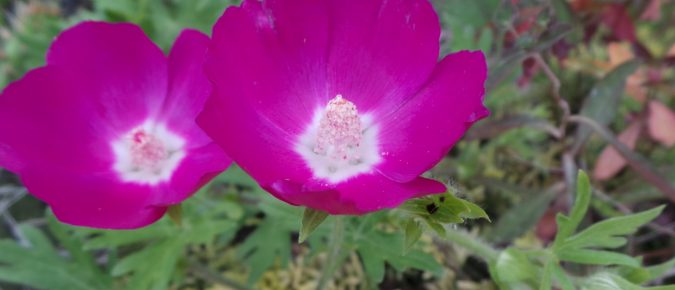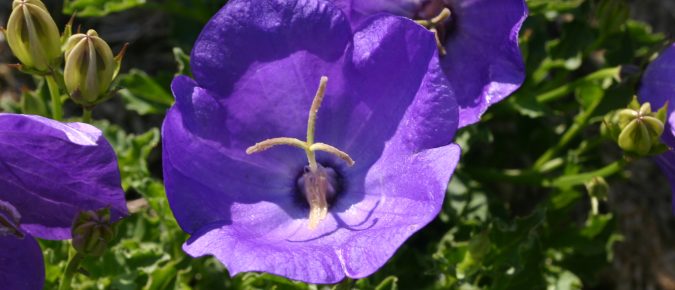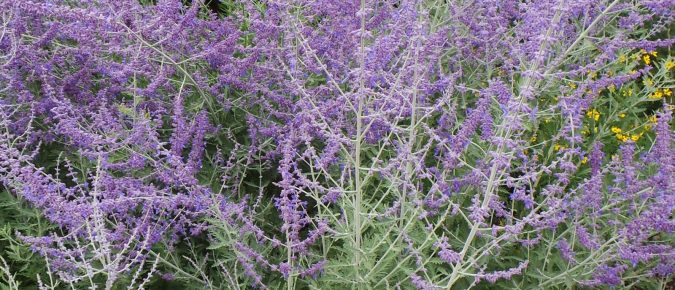Brilliant magenta cup-shaped flowers festoon the rambling stems of winecups all summer long. This native prairie plant comes from dry, rocky areas, but tolerates many types of soil. It combines particularly well with other plants that have pink flowers or blue to gray foliage. Learn more about Callirhoe involucrata in this article…
There are several species of perennial foliage plants in the genus Asarum that make great ground covers for shady sites. European wild ginger and the North American wild ginger are the most commonly used as landscape plants. Both have interesting, but inconspicuous, dark-colored flowers. Learn more about wild ginger in this article…
Campanula carpatica is a low growing herbaceous perennial from the Carpathian Mountains of southeastern Europe. One of the best selections of this species is the ‘Clips’ series. These plants form neat mounds of light green foliage about a foot wide and 6-8 inches tall and remain in clumps that spread only slowly. To learn more about these attractive perennials, read this article…
Tall purple flower spikes characterize the several species Liatris used as ornamentals in gardens. This native plant is at home in the border as it is in a meadow or prairie planting. There are several species and varieties of this easy-to-grow herbaceous perennial. Learn more about Liatris in this article.
With airy purple-blue flowers and gray-green leaves, Russian sage is a nice addition to the late summer garden. This semi-woody plant can be used as a substitute for lavender where it is too cold to grow that plant reliably. It combines well with ornamental grasses and white-flowered perennials. Learn all about Russian sage in this article.









